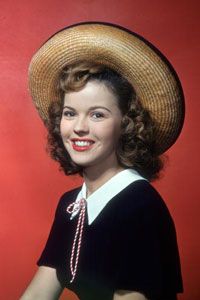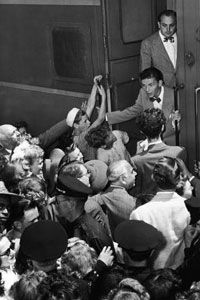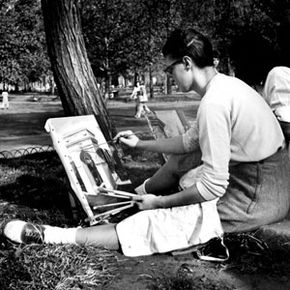In the mid-1940s, one shining star among the constellation of contemporary crooners burned a hole through teenage girls' ears and right into their young hearts. Frank Sinatra's smooth vocal cords could set off riots in those days, and when he played at New York's Paramount Theater in October 1944, hundreds of police officers had to quell the 30,000 ravenous teen fans waiting to hear "The Voice" [source: The Paley Center]. The girls going gaga over Frankie were collectively called "bobby-soxers" in reference to the white, folded-over ankle socks they wore. Although stereotyped in contemporary media as vapid fangirls, bobby-soxers set the tone for American teenage culture, complete with celebrity-worship, trend conformity and detachment from adults.
The September 1944 launch of Seventeen magazine served as official recognition that teenage girls had became their own consumer group -- and a valuable one at that. World War II industrial production had reinvigorated the U.S. economy, shaking loose the cobwebs of the Great Depression and putting more money in everyone's pockets. Teenagers benefited from the boom as well, receiving allowances that they spent at the movies, in soda shops and going to concerts to see their favorite bandleaders and singers of the day. Recognizing the spending and trend-setting power that this newly recognized group wielded, Seventeen magazine and its advertisers set out to simultaneously understand this fledgling demographic and mold its tastes.
Advertisement
Shirley Temple served as a great example when she starred as the consummate bobby-soxer in the 1947 hit "The Bachelor and the Bobby-Soxer." Outfitted in bobby socks, saddle shoes and poodle skirts and spitting out slang of the time, such as "jeepers," Temple epitomized the headstrong adolescence of mid-century teenagers. Swooning for leading man Cary Grant as passionately and fervently as a 15-year-old girl at the Paramount Theater might have reacted to Sinatra, Temple's role offers a slightly satirized view of the upper middle class world of the bobby-soxer, who had money in her pocket to spend where she pleased and new advertising and mass media chaperones to oversee her developing consumer choices. For as much as the history of bobby-soxers is about the lives of teen girls in World War II-era America, it's also a story of how popular culture and advertising permeated that peer group for the first time.





